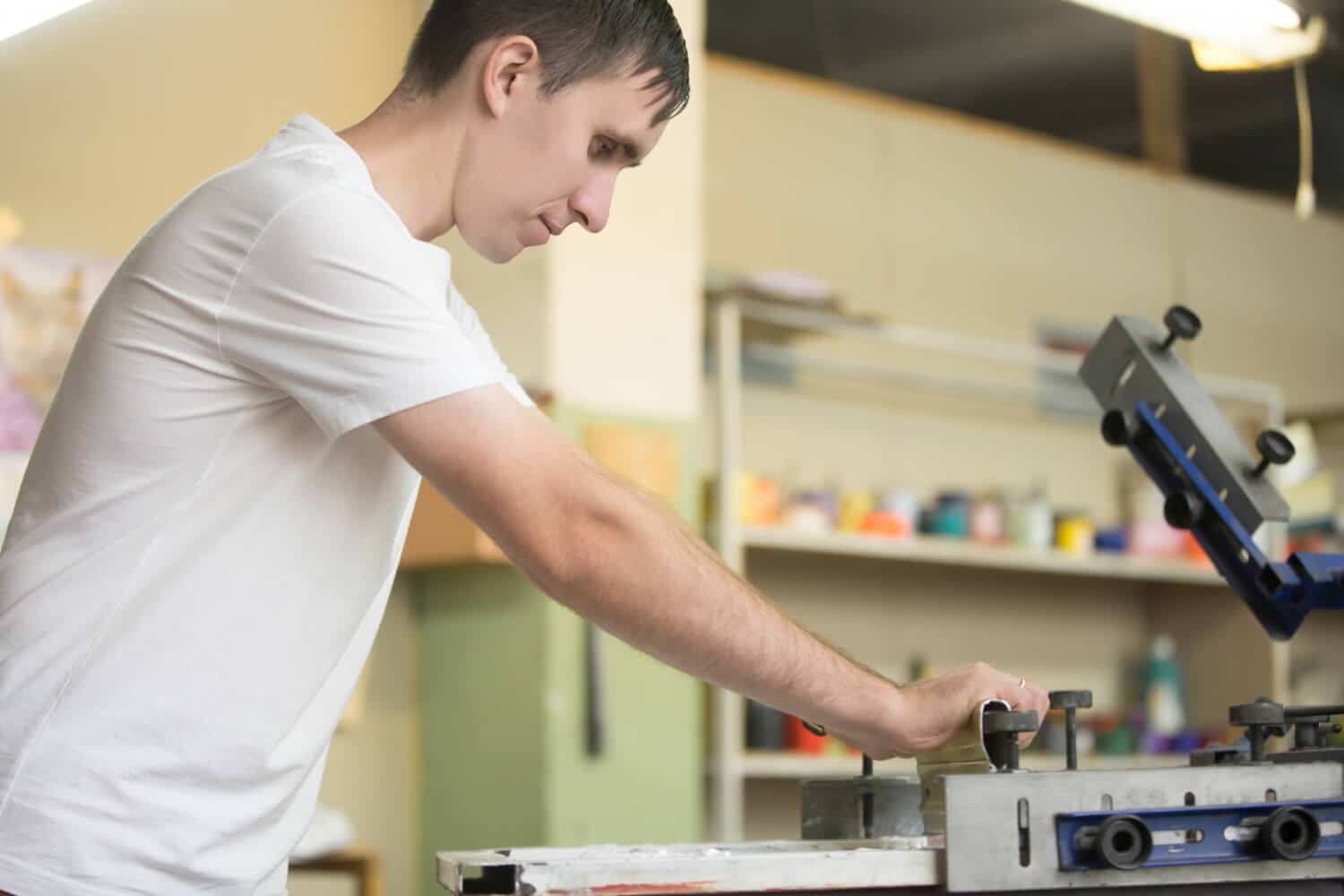
Heat press printing is a method of transferring designs onto fabric using heat and pressure. It’s commonly used for customizing Long Sleeve T-Shirts, sweatshirts and Hoodies with logos, names, or images. Printing the front and back of T-shirts and Hoodies is important for creating a complete and professional-looking garment. Each part adds value and branding to the T-shirt and hoodies. In this blog, we’ll discuss how to use a heat press to print designs on the front and back of a T-shirt, ensuring a thorough understanding of the process.
Things To Consider to Printing A Full T-Shirt
Understanding the Equipment
A heat press is a machine that applies heat and pressure to transfer a design from a special paper onto fabric. It works like a giant iron, but with more control and efficiency. There are different types of heat presses available, including clamshell, swing-away, and combo machines. Each type has its own advantages and is suitable for different printing needs. Using the right equipment is crucial for achieving high-quality prints. The type of fabric, size of the design, and desired outcome all influence the choice of heat press. It’s important to match the equipment to the job to ensure the best results.
Preparing Your Design
When selecting a design for your T-shirts and Hoodies, consider its visual appeal and how well it complements the T-shirt’s style and purpose. Think about the colors, intricate details, and overall theme of the design. It’s essential to choose a design that resonates with your audience and effectively communicates the message or brand you want to convey.
Sizing and positioning are crucial aspects of preparing your design. Determine the ideal size and placement of the design on the T-shirt by considering factors such as the T-shirt’s size, sleeve length, and intended visual impact. You want the design to be visible and aesthetically pleasing without overwhelming the T-shirt or appearing too small.
Before printing, ensure your design is primed for the process. Check that it’s in the correct file format and resolution for optimal printing quality. If you’re using heat transfer material, carefully print or cut out the design to ensure precise application onto the T-shirt. Taking these preparatory steps helps ensure a smooth and successful printing process.
Printing the Front of the T-shirts and Hoodies
Setting up the heat press machine involves adjusting various settings to achieve the best results. Take the time to calibrate the temperature, pressure, and timer settings according to the specific material and design requirements. This step is critical for achieving vibrant, long-lasting prints on your T-shirts and Hoodies.
Properly preparing the T-shirt before printing is essential for achieving professional-looking results. Ensure the T-shirt is clean, free of wrinkles, and positioned correctly on the heat press platen. Smooth out any creases or folds that could interfere with the printing process, as these imperfections can detract from the final product.
When placing the design on the cloth, precision is key. Carefully align the design in the desired position, ensuring it’s centered and symmetrical. Take your time to double-check the alignment before proceeding with the printing process to avoid any misprints or uneven results.
Achieving the best results often requires some experimentation. Try adjusting the pressure, temperature, and pressing duration to find the optimal settings for your specific materials and designs. Conducting test prints on scrap fabric allows you to fine-tune your approach before committing to printing on the actual T-shirt or hoodie, helping you avoid costly mistakes and ensure consistently high-quality results.
Printing the Back of the T-shirts and Hoodies
Before printing, make sure to adjust the heat press settings to suit the back design and fabric type. This includes setting the appropriate temperature, pressure, and timer settings to ensure a successful transfer of the design onto the T-shirt. Properly position the T-shirt on the heat press to ensure accurate printing of the back design. Align the T-shirt carefully to avoid any misprints or off-center designs. Ensuring the T-shirt is flat and wrinkle-free is crucial for achieving a professional-looking result. Using the heat press, transfer the back design onto the T-shirt according to the manufacturer’s instructions. Apply even pressure and heat across the entire design to ensure uniformity and durability.
Be mindful of common mistakes such as uneven pressure, improper alignment, or inadequate heat transfer. These can result in blurry designs, peeling, or fading over time. Taking care to avoid these pitfalls helps ensure a high-quality print on the back of the T-shirt and hoodie.
Final Touches and Quality Check
Carefully remove the T-shirt or hoodie from the heat press once the printing process is complete. Handle it with caution to avoid smudging or damaging the design. Thoroughly inspect the print for any imperfections such as uneven colors, blurriness, or peeling edges. This step ensures that the final product meets your quality standards.
If any touch-ups are needed, address them promptly. This may involve repressing certain areas, fixing minor flaws, or adjusting the settings for subsequent prints.
Prioritize the quality and durability of the print by ensuring that it withstands washing, stretching, and everyday wear. This helps maintain the integrity of the design over time, providing a long-lasting and satisfying product to your customers.
Conclusion
In summary, the heat transfer printing process involves careful consideration of design selection, preparation, and execution using a heat press machine. Attention to detail is paramount in heat press printing to achieve professional-looking results and ensure customer satisfaction.
Check out “T-shirts Direct” today to unleash your creativity and design custom apparel with ease! Whether you’re a seasoned designer or just starting out, our user-friendly platform and high-quality products make it simple to bring your vision to life.







